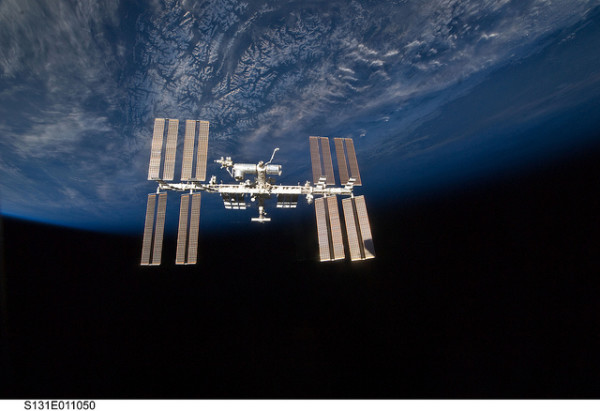The International Space Station (ISS) revolves around the earth at a height of 248 miles. At that distance, gravity is 90% of what is experienced here on earth. Not only is there less gravity aboard the ISS, but it is also in free fall. All objects in free fall drop at the same rate (in a vacuum). Thus, objects onboard are all falling towards the Earth at the same speed, and as a result, they appear to float with respect to the ISS. This condition of weightlessness is known as microgravity.
In order to study the effects of long-term spaceflight on human physiology, scientists have performed genomic analysis to study the epigenetic effects of microgravity on the human genome. The subjects for this experiment were identical twins and NASA astronauts, Scott and Mark Kelly. During the experiment, Scott Kelly spent 340 days on the ISS, while his twin brother Mark stayed on Earth. After his return from the ISS, their genomes were compared and analyzed. The preliminary results were announced in January 2017.
Image Source: Smith Collection/Gado
Scientists found that during his year in space Scott Kelly’s telomeres, the lengths of repeating DNA that tend to shorten with age, had in fact lengthened. Telomeres protect the ends of DNA from damage and play a role in the process of aging. Scientists were quite surprised at the results as it meant that during his time in microgravity Scott Kelly had become younger than his twin brother. Although Scott’s telomeres returned to pre-flight lengths soon after his return, scientists are still trying to understand what had led to their initial elongation.
Scientists also noted other changes in Scott’s DNA, including changes in DNA methylation, a reversible mechanism of gene regulation that determines gene expression. During the course of the study, the levels of DNA methylation decreased in Scott, while it increased in Mark. This also returned to pre-flight levels after the flight.
Differences in gene expression signatures were also found in their genomes. Scientists credited these to the different stresses of space life compared to normal living on earth, such as eating freeze-dried food, a lack of gravity, and much more.
The results from the study are still being analyzed. The full data might not be revealed to the public due to the sensitive nature of the information. With manned space missions being planned for Mars and other long-distance destinations in the solar system, being able to anticipate any changes that may be caused by living under these harsh conditions is becoming increasingly important.
Feature Image Source: Earth and International Space Station (NASA, 04/17/10) by NASA’s Marshall Space Flight is licensed under CC BY-NC 2.0










